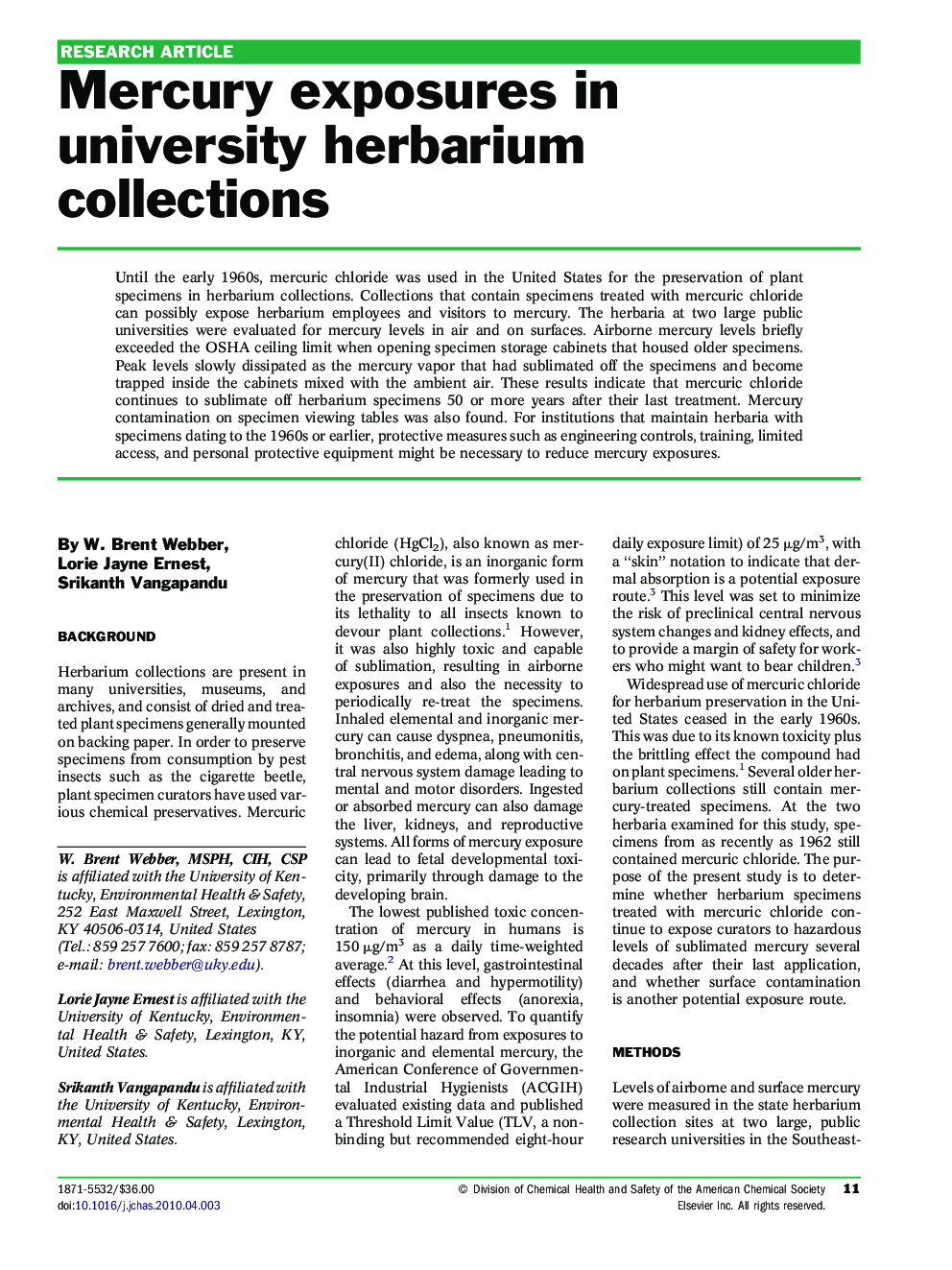| Article ID | Journal | Published Year | Pages | File Type |
|---|---|---|---|---|
| 574909 | Journal of Chemical Health and Safety | 2011 | 4 Pages |
Abstract
Until the early 1960s, mercuric chloride was used in the United States for the preservation of plant specimens in herbarium collections. Collections that contain specimens treated with mercuric chloride can possibly expose herbarium employees and visitors to mercury. The herbaria at two large public universities were evaluated for mercury levels in air and on surfaces. Airborne mercury levels briefly exceeded the OSHA ceiling limit when opening specimen storage cabinets that housed older specimens. Peak levels slowly dissipated as the mercury vapor that had sublimated off the specimens and become trapped inside the cabinets mixed with the ambient air. These results indicate that mercuric chloride continues to sublimate off herbarium specimens 50 or more years after their last treatment. Mercury contamination on specimen viewing tables was also found. For institutions that maintain herbaria with specimens dating to the 1960s or earlier, protective measures such as engineering controls, training, limited access, and personal protective equipment might be necessary to reduce mercury exposures.
Related Topics
Physical Sciences and Engineering
Chemical Engineering
Chemical Health and Safety
Authors
W. Brent Webber, Lorie Jayne Ernest, Srikanth Vangapandu,
